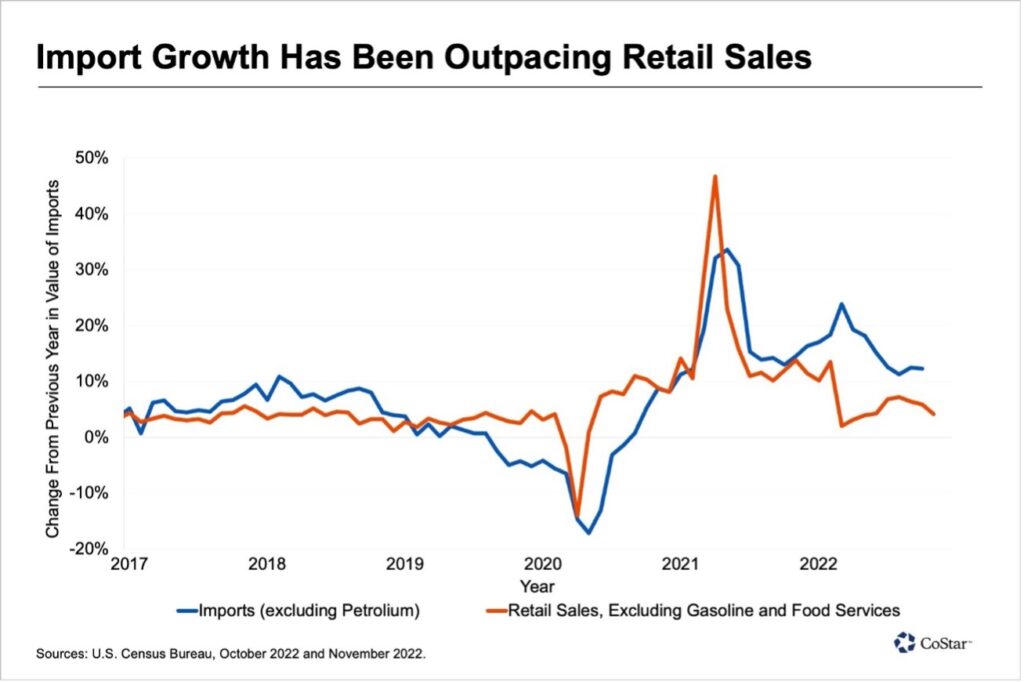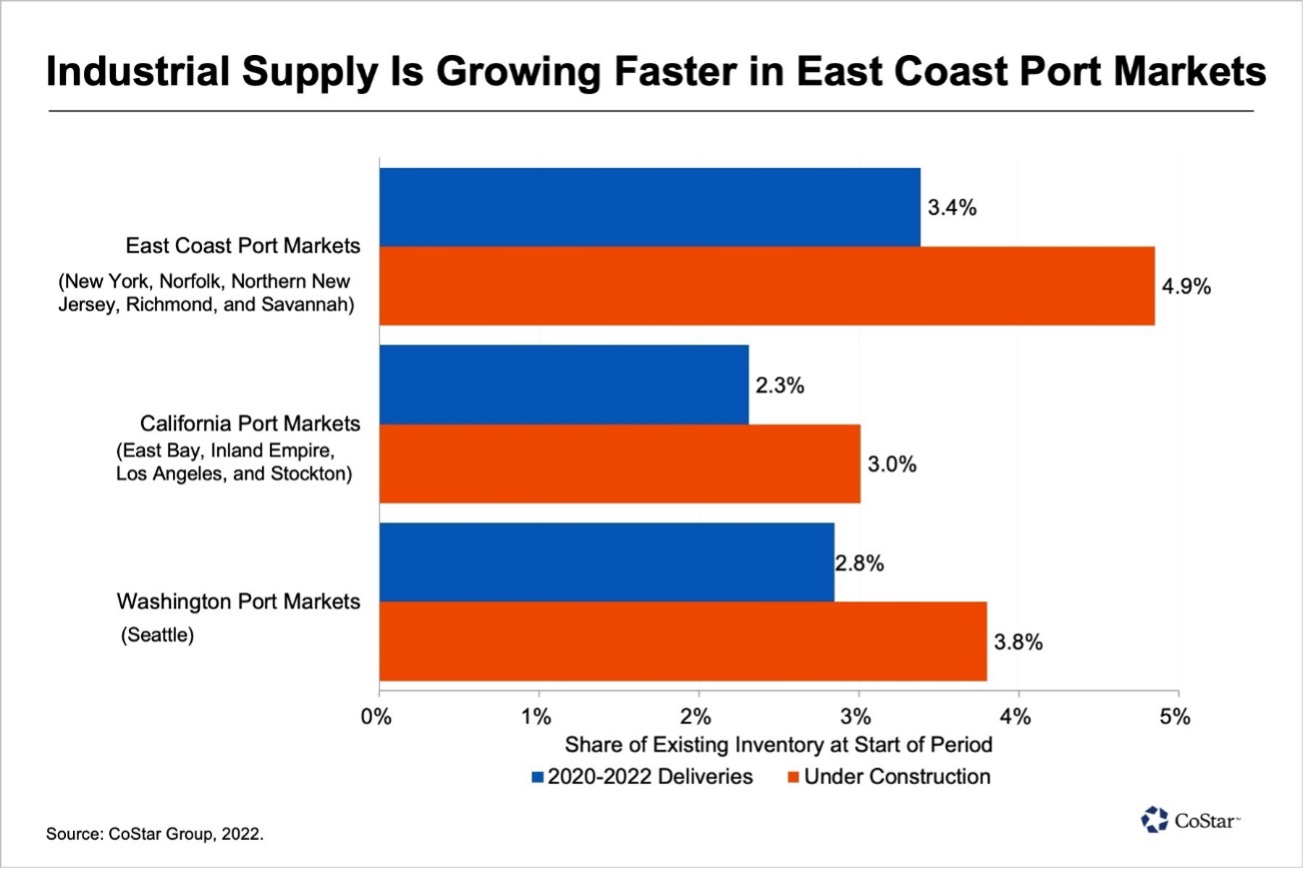As Imports Rise, Retailers Find Themselves Flush With Stuff
The holiday shopping season this year stands in stark contrast to 2021, a time when retailers, facing clogged supply chains and limited production of goods, struggled to keep their shelves stocked to meet the robust demand of shoppers flush with stimulus funds.
Fast forward to today: More than a year’s worth of rampant inflation has tempered consumer enthusiasm for spending, and supplies have loosened up to such a degree that merchandise is being discounted. Few items are in short supply, and finding those hot holiday items has become a relative breeze.
At least that’s the picture for physical goods. The story of consumer spending over the past year has been one of transition away from spending on goods like furniture, computers, cars and exercise equipment, as we were all hunkered down at home, and towards services such as travel, restaurant meals and entertainment, which had largely been restricted during the pandemic.
The latest retail sales report showed that spending fell in November by 0.6% over the month, the largest decline of the year and driven by a pullback in purchases of goods and by discounts offered by retailers hoping to clear overstocked shelves.
That same massive appetite for physical goods drove a good deal of the demand for industrial space over the past few years, as most goods were shipped from Asia and Europe to warehouses in the U.S. West and East. There is a strong correlation between imports (as measured by value) and retail sales, which lag imports by a month or two, so monitoring retail sales is a quick indicator into the future health of the industrial space market. However, that correlation has become less evident in recent months, suggesting that firms are struggling to adjust to the rapidly changing political and economic climate.
In 2018, soon after President Donald Trump imposed tariffs on China, import growth began to slow as more domestic product made its way into retail sales. Growth of both sales and imports diverged further at the onset of the pandemic as supply chains were disrupted and failed to keep up with the outsized demand for goods boosted by stimulus funds. Ships at ports waited for weeks to have their merchandise unloaded.


But starting in early 2022, growth of retail sales returned to normal levels. Imports continued to make up for lost ground, helping manufacturers deliver many goods that had been on order but in short supply. In October, imports excluding petroleum grew by 1% and were 12.2% higher than a year ago.
Overcoming snagged supply chains has motivated some firms to find new trading partners, and sometimes turning to domestic production. For example, Apple recently announced that it would buy its microchips from a Taiwan Semiconductor Manufacturing Company factory based in Phoenix.
Among other developments, there appears to be less reliance on factories in China, particularly as the nation’s Zero-COVID policy created production challenges. While imports from China grew by 13.6% in the 12-month period ending in October compared to the same period in 2021, imports from North America (i.e., Canada and Mexico) grew by 24% over the same period. Indeed, imports from Canada and Mexico have been growing faster than imports from Europe, China or Pacific Rim countries since early 2021, likely the result of the passage of the United States-Mexico-Canada Agreement.
In just the past month, however, China has eased COVID restrictions and is looking to promote economic growth in 2023, after factory production slid to a seven-month low in November.
Whether that will lead to higher U.S. imports is something to watch in 2023, particularly for the logistics industry near West Coast ports.
The combination of increased tariffs and COVID-related policies in both countries have led imports flowing through California’s largest ports to underperform their East Eoast counterparts. Cargo capacity units known as loaded 20-foot-equivalents (TEUs) entering at the Ports of Los Angeles, Long Beach and Oakland, collectively, fell by 5.8% in the 12-month period ending in October compared to the same period in 2021.
The ports of Seattle and Tacoma experienced an even steeper decline in loaded imported TEUs of 11.6% over the same period. In contrast, loaded TEUs imported at the Ports of Newark, Savannah, and Norfolk grew by 7.2% over the same period.

Expansion of the Panama Canal was widely expected to benefit East Coast markets as goods coming from Asia could remain on ships longer and be unloaded closer to their destination. This led to lower costs for transportation as moving goods by shorter truck trips can be more economical than cross-country rail transportation.
Costs of industrial development in the East are also lower than those in California, where land is pricey and industrial development faces the risk of environmental lawsuits and local moratoriums against development. Also motivating routing of more import traffic to East Coast ports is a reluctance by some importers to depend too heavily on West Coast ports, which have been plagued in the past by congestion and labor disputes.
The recent result has been the growth in supply in East Coast port markets outstripping new supply and new projects in the pipeline in West Coast port markets. Overall, however, the slowdown in goods demand and consumption could be a warning shot for oversupplied markets despite what has been a red-hot market for industrial space.

What We’re Watching …
As the year comes to an end, we’ll be focusing on where trends lead us in the New Year. Interest rates are still expected to rise, housing is moving further into recession and the labor market is expected to slow meaningfully as layoffs materialize and job gains slow or turn negative.
Remnants of the pandemic still linger, and there’s no guarantee that any recovery following a likely recession will be robust. Better to enjoy the holiday season while we still can. Our best wishes to you all for a happy and healthy New Year!



